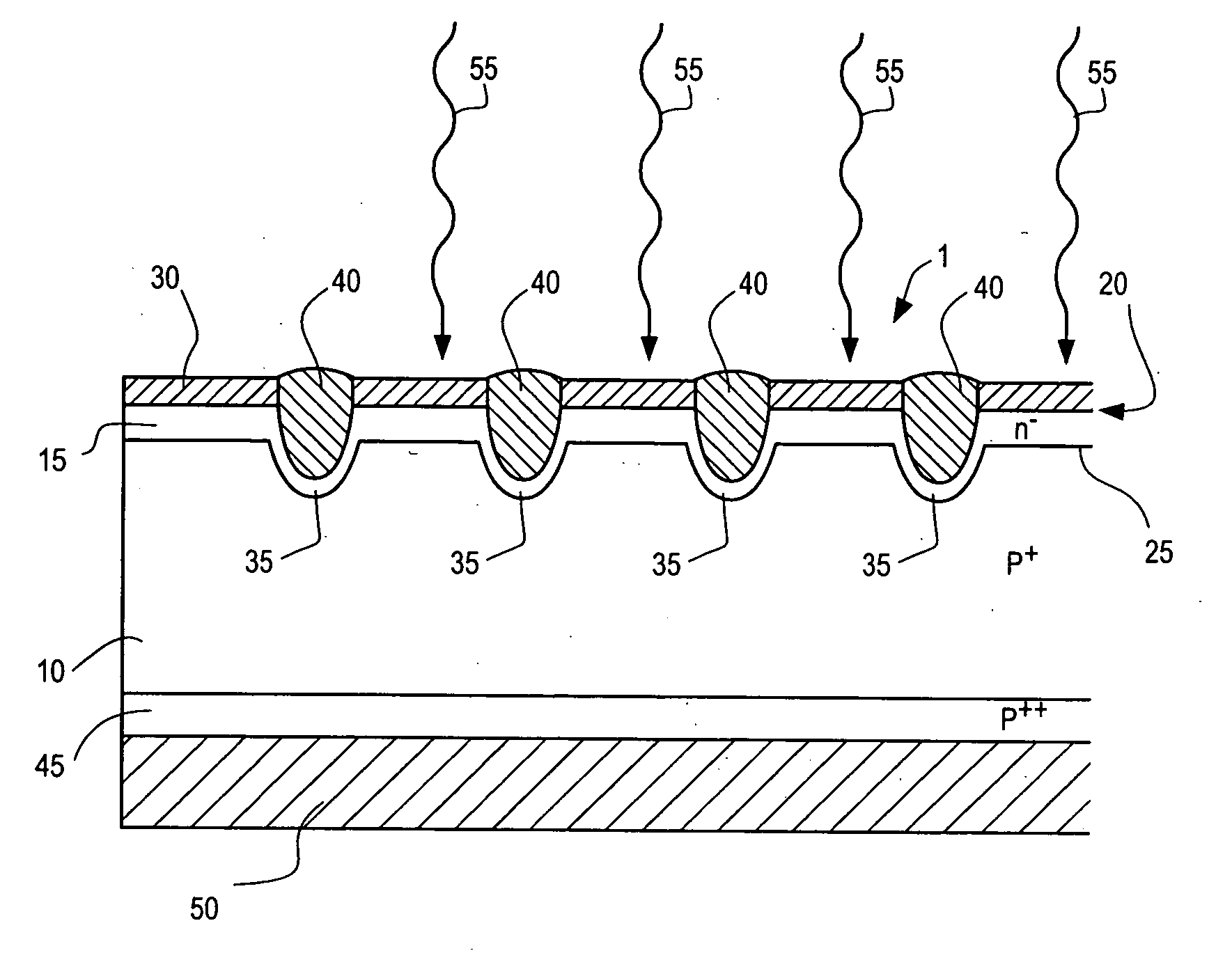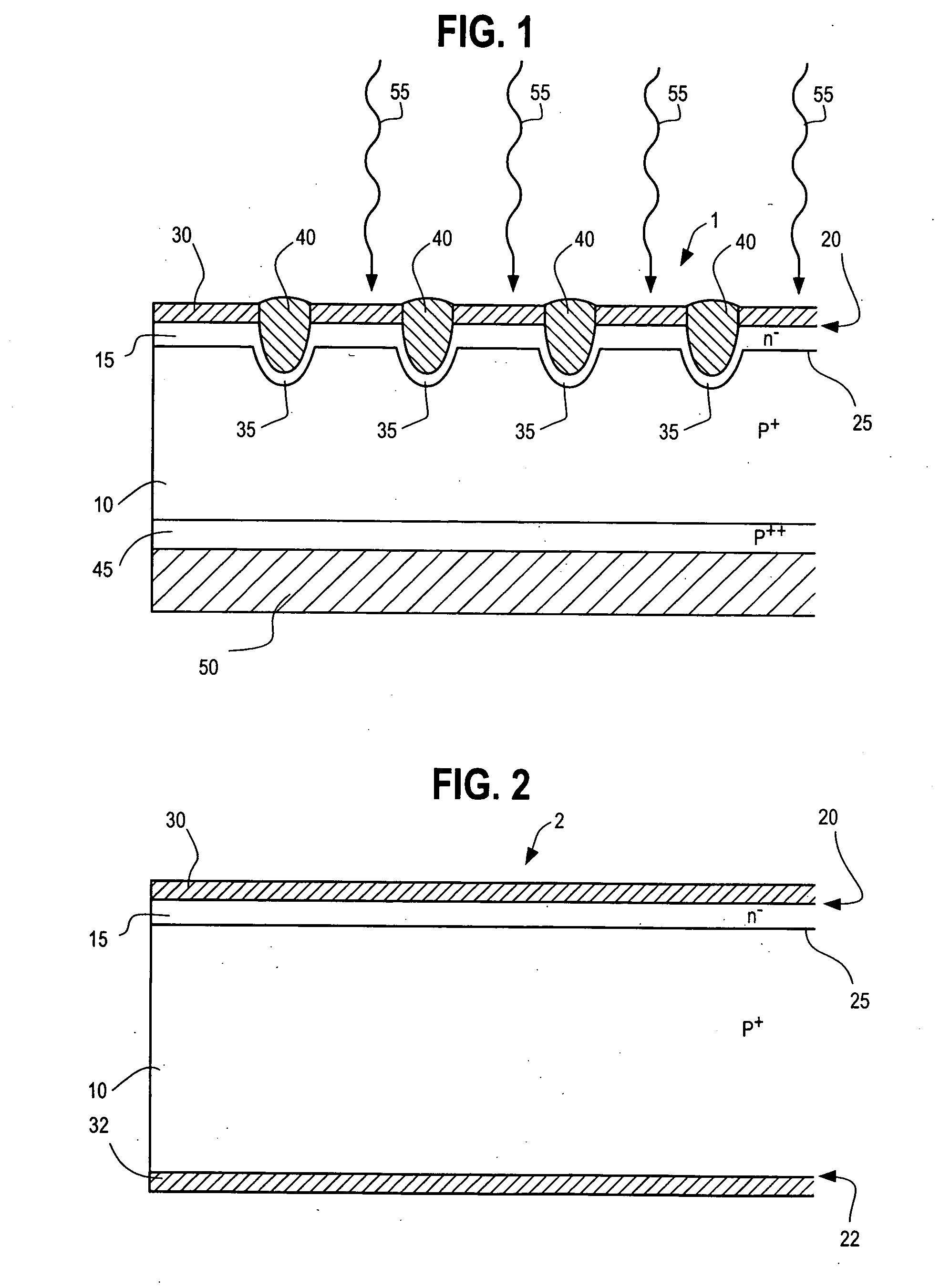Process for manufacturing photovoltaic cells
a photovoltaic cell and manufacturing technology, applied in the direction of manufacturing tools, sustainable manufacturing/processing, final product manufacturing, etc., can solve the problems of reducing the efficiency of the cell, affecting the formation of the back surface field, and unfavorable cell efficiency reduction
- Summary
- Abstract
- Description
- Claims
- Application Information
AI Technical Summary
Benefits of technology
Problems solved by technology
Method used
Image
Examples
examples 1 and 2
OF THE INVENTION
[0037] Examples 1 and 2 are examples of solar cells having an area of 147 cm2 that were prepared using the general process and in the order of process steps in accordance with this invention as follows:
[0038] 1. Starting Material
[0039] The silicon wafers used were conventional Cz silicon wafers doped p-type with boron to a resistivity of 1.2 ohm.cm and grown with [100] crystal planes parallel to the wafer surface. The wafer dimensions were 127 millimeters square with rounded corners of a diameter 150 millimeters. The wafer thickness was 300 micrometers. Such wafers are commercially available, for example, from Bayer Solar GmbH, PV Silicon GmbH or Pillar.
[0040] 2. Wafer Surface Preparation
[0041] The wafers were anisotropically “texture” etched in a solution of sodium hydroxide and propanol at a temperature of 90° C. and cleaned by subsequent immersions in hydrofluoric acid and hydrochloric acid with intermediate and final rinsing in de-ionized water followed by dr...
PUM
| Property | Measurement | Unit |
|---|---|---|
| thick | aaaaa | aaaaa |
| thick | aaaaa | aaaaa |
| diameter | aaaaa | aaaaa |
Abstract
Description
Claims
Application Information
 Login to View More
Login to View More - R&D
- Intellectual Property
- Life Sciences
- Materials
- Tech Scout
- Unparalleled Data Quality
- Higher Quality Content
- 60% Fewer Hallucinations
Browse by: Latest US Patents, China's latest patents, Technical Efficacy Thesaurus, Application Domain, Technology Topic, Popular Technical Reports.
© 2025 PatSnap. All rights reserved.Legal|Privacy policy|Modern Slavery Act Transparency Statement|Sitemap|About US| Contact US: help@patsnap.com


